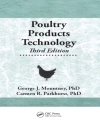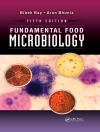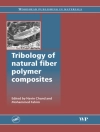Food proteomics is one of the most dynamic and fast-developing areas in food science. The goal of this book is to be a reference guide on the principles and the current and future potential applications of proteomics in food science and technology. More specifically, the book will discuss recent developments and the expected trends of the near future in food proteomics. The book will be divided into two parts. The first part (7 chapters) will focus on the basic principles for proteomics, e.g., sample preparation, such as extraction and separation techniques, analytical instrumentation currently in use, and available databases for peptide and protein identification. The second part of the book (26 chapters) will focus on applications in foods. It will deal with quality issues related to post-mortem processes in animal foods and quality traits for all foods in general, as well as the identification of bioactive peptides and proteins, which are very important from the nutritional point of view. Furthermore, consumers are now extremely susceptible to food safety issues, and proteomics can provide reassurance with different safety aspects, such as food authenticity, detection of animal species in the food, and identification of food allergens. All of these issues will be covered in this book. It is also worth noting that both editors are internationally recognized experts in the field of food science, and both have edited numerous food science books and handbooks.
Mục lục
Part I. Principles of Proteomics.- 1. Understanding the proteome. – 2. Extraction/fractionation techniques for proteins and peptides and Protein digestion.- 3. Primary separation: 2-D electrophoresis.- 4. Primary Separation: Chromatography.- 5. Mass spectrometry applications.- Part II. Food Applications of Proteomics.- 6. Challenges and applications of protemics for analysis of changes in early postmortem meat.- 7. Application of proteomics for analysis of protein modifications in postmortem meat.- 8. Biological markers for meat tenderness of the three main French beef breeds using 2-DE and MS approach.- 9. Dry-cured ham.- 10. Evaluation of fish quality and safety by proteomics techniques.- 11. Farmed and Wild fish.- 12. Fish Authentication.- 13. Proteomics in Milk and Milk Processing.- 14. Cheese processing.- 15. Lactic acid bacteria in fermented foods.- 16. Wine quality.- 17. Eggs.- 18. Fruits and vegetables.- 19. Wheat grain proteomics for the food industry.- 20. Proteomics and applications to food science in rice.- 21. Beer proteomics.- 22. Nutritionally relevant proteins.- 23. Relevance of Peptides Bioactivity in Foods.- 24. The role of proteomics in the discovery of marker proteins of food adulteration.- 25. Evaluation of genetically engineered crops using proteomics.- 26. Microbial proteomics for food safety.- 27. Prion biomarkers.- 28. Proteomics of filamentous fungi.
Giới thiệu về tác giả
Fidel Toldrá is a Research Professor at the Instituto de Agroquímica y Tecnología de Alimentos (CSIC), Valencia, Spain
Leo M. L. Nollet is a Professor at the University College Ghent (Hogeschool Gent), Belgium












